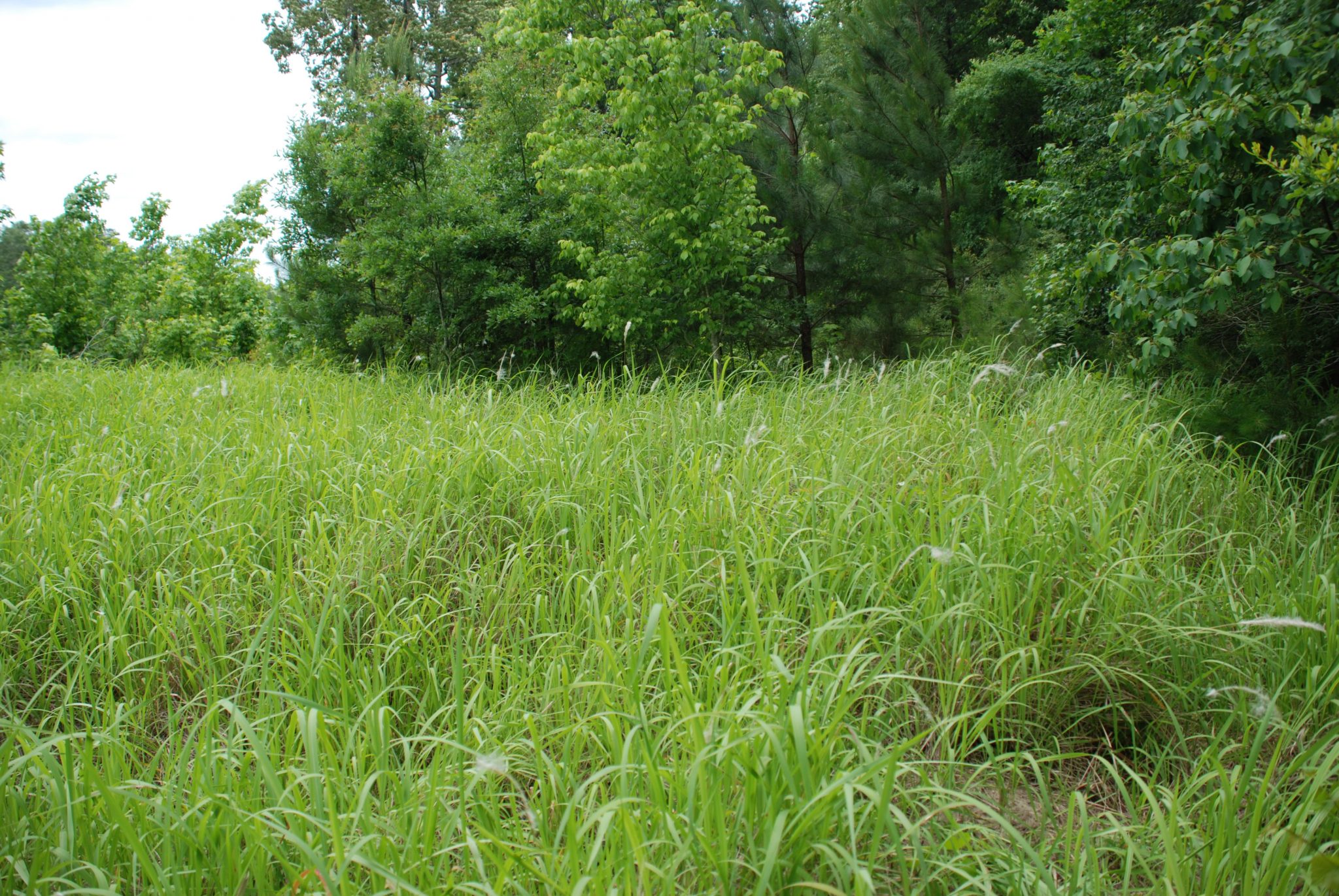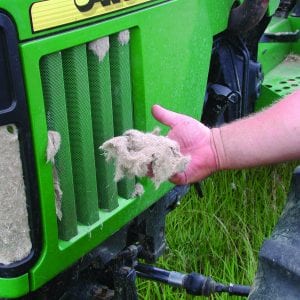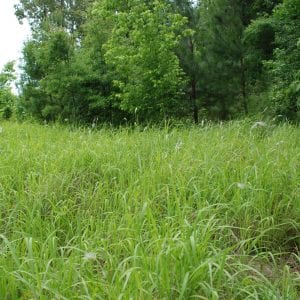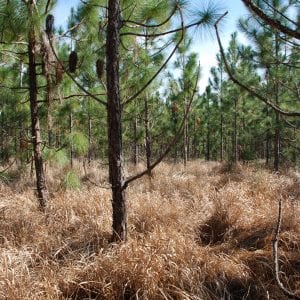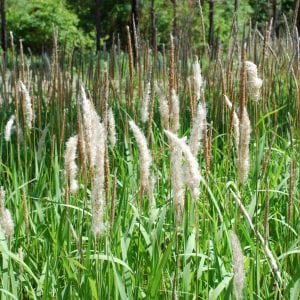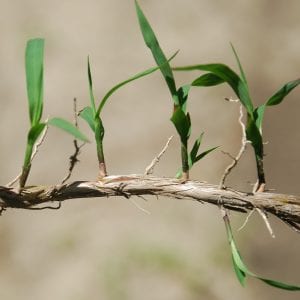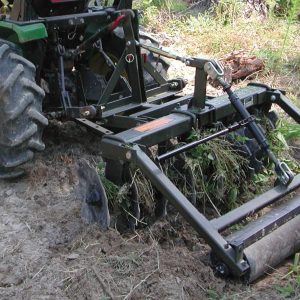Forestry & Wildlife

Cogongrass is an aggressive weed that is rapidly spreading across Alabama and the Southeast. Learn important steps you can take to slow the spread of this environmental invader.
Cogongrass (Imperata cylindrica) is highly invasive and a recognized noxious weed. It reduces forest productivity, degrades wildlife habitat, and affects rights- of-way maintenance. It can spread quickly by hitchhiking on skidders, road graders, mowers, food plot equipment, and other forest and road maintenance equipment (figure 1). Preventing spread is much more cost effective than the impact and treatment costs of new infestations.
By following these three steps, you can help significantly slow the spread of cogongrass.
Step 1. Learn to Identify Cogongrass
- Leaves are 1⁄2 to 1 inch wide and 1 to 5 feet tall. Leaf margins are finely serrated (rough). The leaves are often yellowish green (figure 2) with a whitish midrib that may be off-center, especially near the base of the leaves. Leaves turn a distinctive reddish tan color in winter (figure 3).
- Flowers are 2 to 8 inches in length and silvery white when mature. The seeds are light and fluffy, like dandelion seeds. Flowers bloom in spring or early summer or after a disturbance (figure 4).
- Plant bases have no apparent stems, so leaves appear to arise directly from or close to the ground. Plants are more spread out than clumped.
- Underground portions of the plant grow in a dense mat of light-colored rhizomes (underground stems). The rhizomes are covered in flaky scales, are strongly segmented, and have sharp points. During the growing season, the sharp points can be felt by gently pressing the palm of your hand down in a patch of cogongrass.
- Whole plants grow in dense, often circular patches.
- For more on cogongrass identification, see “Field Guide to the Identification of Cogongrass: With Comparisons to Other Look-a-Like Species”
on the Alabama Extension website at www.aces.edu.
- Figure 1. Cogongrass seeds hitchhiking on a tractor. Avoid mowing or working in cogongrass while it is blooming. (Photo credit: W. Faircloth,USDA ARS, Bugwood.org.)
- Figure 2. Cogongrass infestation showing the typical yellowish green color of the leaves.
- Figure 3. Cogongrass leaves turn a distinctive reddish tan color in winter.
- Figure 4. Cogongrass flowers.
Step 2. Avoid Cogongrass
- Cogongrass is spread by windblown seeds and the underground rhizomes, which have buds that can start new plants (figure 5). Seeds or pieces of rhizomes that move to new areas in soil, fill dirt, hay, sod, or on equipment can sprout and start new infestations.
- Do not mow, bushhog, or enter cogongrass infestations when flowers or seed heads are present.
- Do not work in cogongrass when soil is muddy as rhizomes can break off and stick on equipment.
- Do not grade or push roads or fire lines through cogongrass. If this is unavoidable, try to work in contaminated sites last.
- Figure 5. Cogongrass rhizome sprouts arising from buds on the rhizomes.
- Figure 6a. Cogongrass is classified as a federal and state noxious weed. Cleaning vehicles and equipment in the field is necessary to stop the spread. (Photo credit: David J. Moorhead, Bugwood.org)
- Figure 6b.
Step 3. Clean Vehicles, Equipment, and Clothing After Operating in Infested Areas
If you must work in areas infested with cogongrass, clean vehicles, equipment, and clothing before moving into an uncontaminated area (figure 6). Cleaning vehicles and equipment in the field may be challenging, but it is necessary to stop the spread of cogongrass. Because cogongrass is classified as a federal and state noxious weed, it is illegal to transport plants, seeds, or plant parts.
Areas to Check and Clean
- Radiator, grill, undercarriage, and tops of vehicles
- Blades and under the deck of bushhogs, mowers, etc.
- Tires, rims, and tracks
- Places where seeds and rhizomes can stick to grease and mud (seals, bearings, etc.)
- Clothing (especially wrinkles and cuffs)
A broom and shovel may be the most practical tools to dislodge seed and rhizome material. If available, a pressure washer is especially effective for cleaning vehicles and equipment. However, in the field, follow best management practices:
- Clean in an open site that can be monitored and where new cogongrass plants can be eradicated.
- Bag as much of the removed materials as possible and dispose of them in the trash.
- Using power washers in the field:
- Do not wash off parts of the machine that have oil buildup.
- Do not use chemical detergents.
- Do not wash vehicles or equipment where water runoff can reach a stream.
- Schedule thorough cleanings at a garage or other facility as often as possible.
For more information, see “Preventing the Spread of Invasive Plants: Best Management Practices for Land Managers (3rd ed.)” available on the United States Forest Service website.
 Nancy J. Loewenstein, Extension Specialist, Forestry and Wildlife Sciences, Auburn University
Nancy J. Loewenstein, Extension Specialist, Forestry and Wildlife Sciences, Auburn University
Revised July 2023, Stop Cogongrass Hitchhikers, ANR-1321

